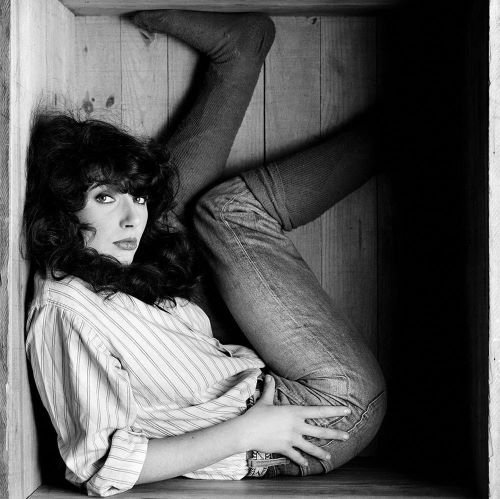FEATURE:
Kate Bush’s The Kick Inside at Forty-Five
Feel It: Introducing the Band…
_________
I think people forget…
PHOTO CREDIT: Gered Mankowitz
the acclaim that The Kick Inside received after its release into the world on 17th February, 1978. The debut album from Kate Bush, in years since its release, it has stood the test of time and is still talked about. I think that most people associate Kate Bush with Hounds of Love. That 1985 album remains her most-famous, but The Kick Inside is one that should be celebrated and talked about more. It is the ninth biggest-selling album of 1978. It includes Wuthering Heights – her timeless debut single that became the first self-composed song by a female artist to top the U.K. chart. The Kick Inside went to three n the U.K., and it was a success around Europe and Australia. Japan bonded with it. The Dutch and Portuguese charts took it to number one so, from the very start, Bush had a number one album and single (a feat that she would not achieve on Hounds of Love). America is one of few nations that didn’t get the album at all. A commercial flop there, I think a lack of promotion and interviews there accounted for its relative anonymity. Bush was not an artist setting out to crack America and be a big name there. She did promote The Kick Inside around Europe and further afield. 1978 was an intense year where Bush committed to making sure her music was being heard and talked about. The album itself is simpler than future Bush albums, but it remains one of her most beautiful and boldest.
In terms of the themes she was discussing, I think that is the biggest takeaway. She did not need varied and challenging compositions. No need to explore too many genres to start. Recorded largely between July and August 1977, the songs are piano-based and fairly simple in structure. She was singing about complex and mature themes for a teenage artist – with no peers of her age covering the same topics in her music. Of course, it is not just Kate Bush on the album. I think the band also help bring the songs to life. There was always a bit of a personal vs. label pull as to who would play on The Kick Inside – and something that would intensify dramatically for the follow-up, Lionheart (1978). Not that there were major falling outs but, as Bush recently toured with the KT Bush Ban prior to being called into the studio, she might have wanted to work with Del Palmer, Brian Bath and Vic King. Del Palmer and Brian Bath would appear on Kate Bush albums (Palmer has remained Bush’s engineer to this date), but The Kick Inside is an anomaly. It is the album without any of Bush’s chosen players appearing. She was a new artist, so I am not sure whether she was in the position to request her own band and judge how they would translate from the pubs to the studio. Relatively inexperienced, producer Andrew Powell wanted a more experienced band behind her. Maybe Bush’s guys would have given The Kick Inside a looser and less studied and narrow sound. That may have been a good move…but it might have backfired!
To be fair, The Kick Inside does have a broader musical spectrum than most people realise. Even if the core instruments of percussion, guitar, bass and piano form the base, they are deployed with emotional and sonic ambition and range. There are other instruments in the mix too. Bush would play the tracks through for the musicians, then the songs would develop from there. Even if Bush fought for the KT Bush Band for her debut, she was in awe of the musicians who played with her on The Kick Inside. Producer Andrew Powell played on The Kick Inside (he took the bass part for Wuthering Heights). The core of the band consisted of Duncan Mackay, Ian Bairnson, David Paton and Stuart Elliott. Experienced studio and touring musicians, they added that weight and professionalism to the album. Two members of the band Pilot, Ian Bairnson and David Paton, are among the most prominent musicians on The Kick Inside. Bush recognised both from Pilot, and there was a lot of respect and admiration between them all. Bairnson is responsible for the winding, evocative and powerful guitar solo that ends Wuthering Heights. David Paton’s bass work is full of character and emotion. Paton and Bairnson also provided backing vocals. I can imagine how much fun it would have been doing overdubs with Bush. A lot of fun was had through the recording sessions. Even if Andrew Powell’s production does not really allow some songs to breath and move as naturally as they should, the performances are exceptional. The chemistry between Bush and her band makes The Kick Inside such a timeless and brilliant album. The band and Bush have this wonderful link and connection that brings the songs to life. When we think about The Kick Inside on its forty-fifth anniversary on 17th February, we think about the band and the incredible musicians who helped bring this iconic debut album to life! Whilst the band were stunned and amazed by Bush and her talent, it must have been so exciting for her to be around…
THEM heady people.


